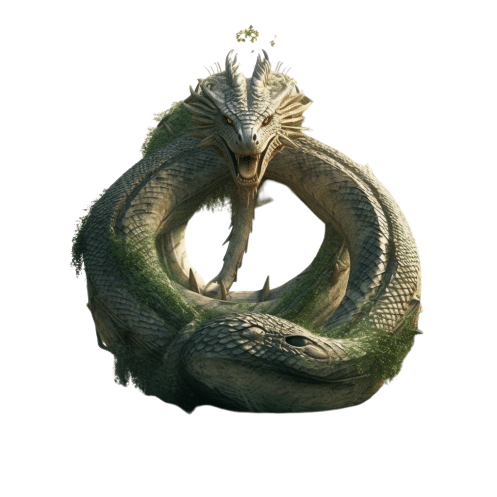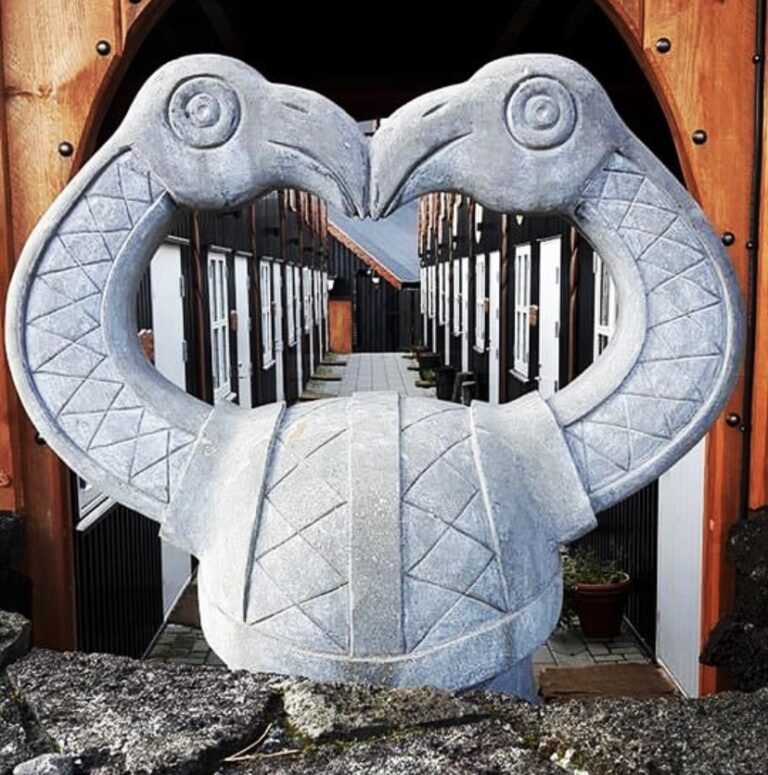Web of Wyrd: The Irresistible Causal Force that Shapes all Events
The Web of Wyrd is a symbol of fate. There is a belief that women in Norse mythology are more deeply connected to the spinning of fate. This symbol is a modern creation, but is tied to women’s weaving. Just as wool turns on the spindle, our lives are also woven together and become the fabric of our existence.
There is a wonderful adage that is sometimes credited as being an Old Norse proverb. It reads: “Fate leads the willing, and drags the reluctant.” Norse mythology is deeply rooted in the idea of fate.

The Historical Concept of Wyrd
The Web of Wyrd is sometimes referred to as the matrix of fate, web of fate or skuld’s net. It is, however, a modern design that is deeply connected to Norse and pagan culture. Just because its depiction is new, does not mean that it is an entirely modern creation. It is linked to the concept of Wyrd which existed in many pagan cultures. In Nordic mythology, runic divination (the divine intersession through rune magic) was more closely associated with women. This might be because of concepts like Wyrd which linked spinning of fate, with the weaving work of women.
If you want to do a deep dive into the concept of Wyrd then check out this article by Roger Pearson titled: The Roots of Science: Wyrd and Causality versus Providence.

Spinners of Fate
Norse people shared a belief with many other past pagans. They believed the thread of our lives can be altered by what is spoken. Additionally, they believed strongly in the concept of fate. This symbol of destiny reminds modern day pagans, that the actions of the past affect their futures.
All things are connected over the passing of time to our present actions. It is believed that the symbol contains the infinite knowledge of the fate of all beings. This is why it is sometimes also referred to as the web of life.

In viking mythology the Norns are female beings that are believed to create and control fate. This actually makes them incredible cosmic forces in the universe. They surpass even the God Odin in power, since he too is inevitably subject to fate. In the modern mythology, it is the Norns who are believed to spin weave the Web of Wyrd.
Modern Creation
Although this is not an ancient symbol it is one of the most popular symbols we see representing the Viking Age. It is comprised of nine staves and the entire runic alphabet in a series of straight lines and angular grid that create a beautifully complex, yet simple pagan symbol. The web is inspired by weaving and is connected to femininity. The design was believed to be woven by the Norns, the shapers of destiny, and is thought to represent the past, present, and future.
Now, if it’s not an ancient symbol, and the Norns are thought to be quite ancient, along with the existing Norse literature, then how can anyone claim that this has anything to do with the Elder Futhark (runic alphabet), or runic symbols at all?
Well, I’m an optimist. So stretch your imagination a little bit. Allow yourself to believe that if the Norns already created all of existence, and wove into being all life, then they totally created this design. They just held back on its creation for awhile. In the 1980s they finally inspired the right person to dream up the image of the Web of Wryd. Sure, that’s a stretch, but origins of the Web of Wyrd symbol are not entirely known, and only seem to appear in the literature quite recently. In modern times, there has been a resurgence of interest in Pagan practices, and the Web of Wyrd has emerged as an important symbol. This was perhaps, designed many moons ago, by the Norns are that sat weaving under the tree of life.
Rooted in Norse Tradition
The web of wyrd shares much of the same meaning with whats known as the world tree Yggdrasil. It too represents the interconnectedness of all life and existence. In ancient Ireland we see stories that seem to be connected to similar ideas of fate.

Check out Emily Ruch’s dissertation Wyrd Webs and Woven Words: Archetypal Expressions of Fate in Classical, Celtic, and Norse Mythology. In this she tells of a story of a woman sitting beneath a tree weaving a green cloth. She allows someone to touch the cloth at some point but “not remove Ireland’s green mantle”. Is she referring to a simple green cloth, the canopy of trees above, or the world itself.
The woman sitting beneath a tree weaving is reminiscent of the goddess of fate sitting next to the well of urd at the foot of Yggdrasil weaving all of existence into being. So while the symbol itself may be a newer creation, the concept of Wyrd (pertaining to the broad concept of fate) was certainly known amongst many germanic tribes in the Viking and pre-Viking-Age.
The Importance of Runic Design
Runes are typically given great emphasis in Norse mythology and literature. In Hávamál (a poem recorded in the Codex Reguis manuscript of the 13th century, we hear of Odin winning runes as well as a list of magic spells and divinations. The form of the Web of Wyrd is made up of three sets of straight lines which total nine. The numbers three and nine are deeply connected to Germanic paganism and therefore it makes sense that the design encompasses the interconnected lines amounting to both three and nine.
For some information on the Web of Wyrd and the Germanic influence on the importance of both three and nine in numerology, check out the Developments in Ancient Germanic Studies project.
If you want to check out even more symbols go check out my section on symbols and their meanings.








hi, i really like this new web i think is good and interessant i always liked everything related with the history of north europe and germanic, greetings from Spain